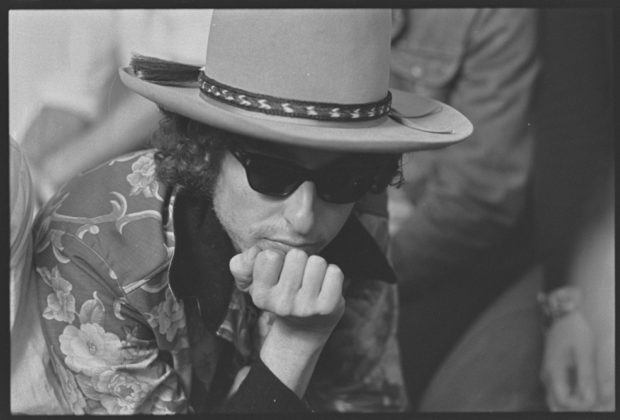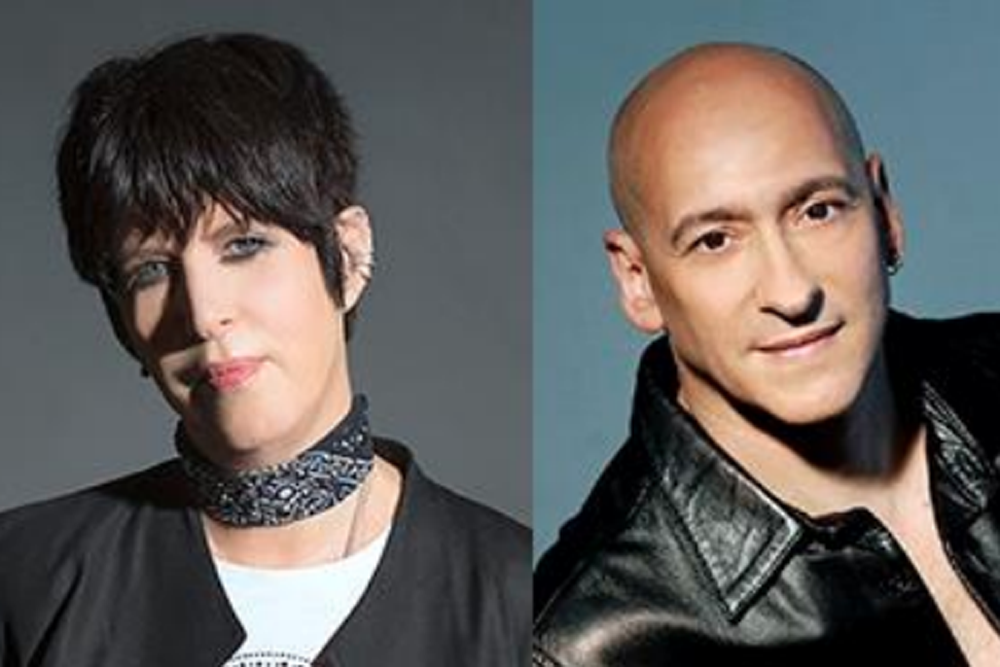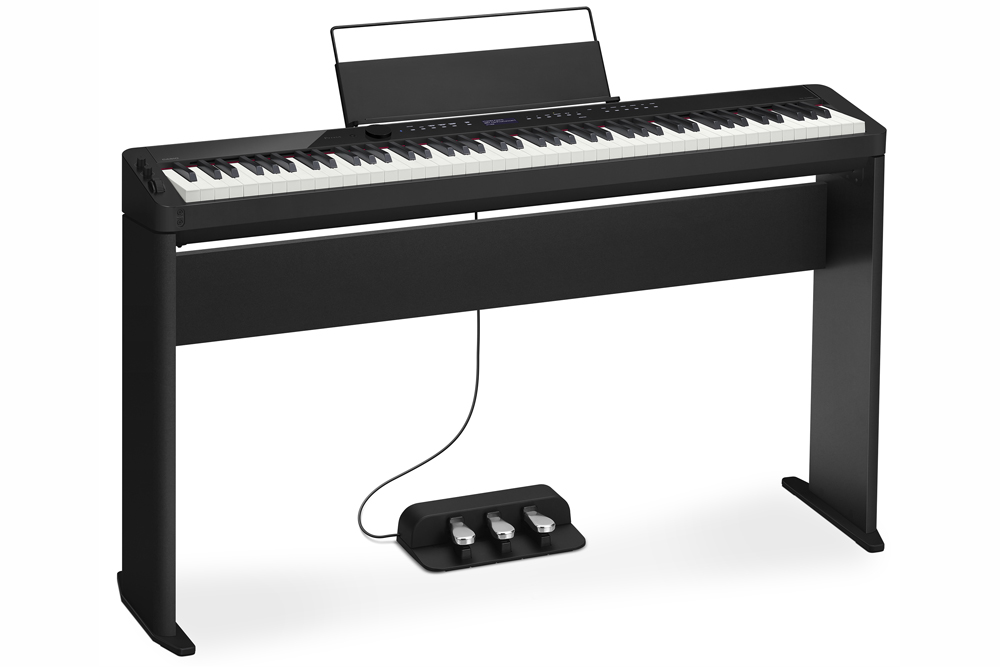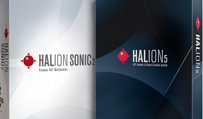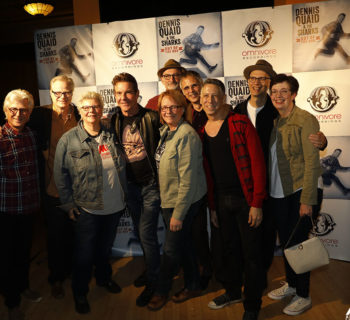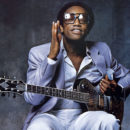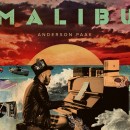A comprehensive anthology of music from the mythic first leg of Bob Dylan's groundbreaking Rolling Thunder Revue, this 14CD box set includes all five of Dylan’s full sets from that tour that were professionally recorded.
The collection also provides the listener with an intimate insider's seat for recently unearthed rehearsals at New York's S.I.R. studios and the Seacrest Motel in Falmouth, MA plus a bonus disc showcasing one-of-a-kind performances from the tour.
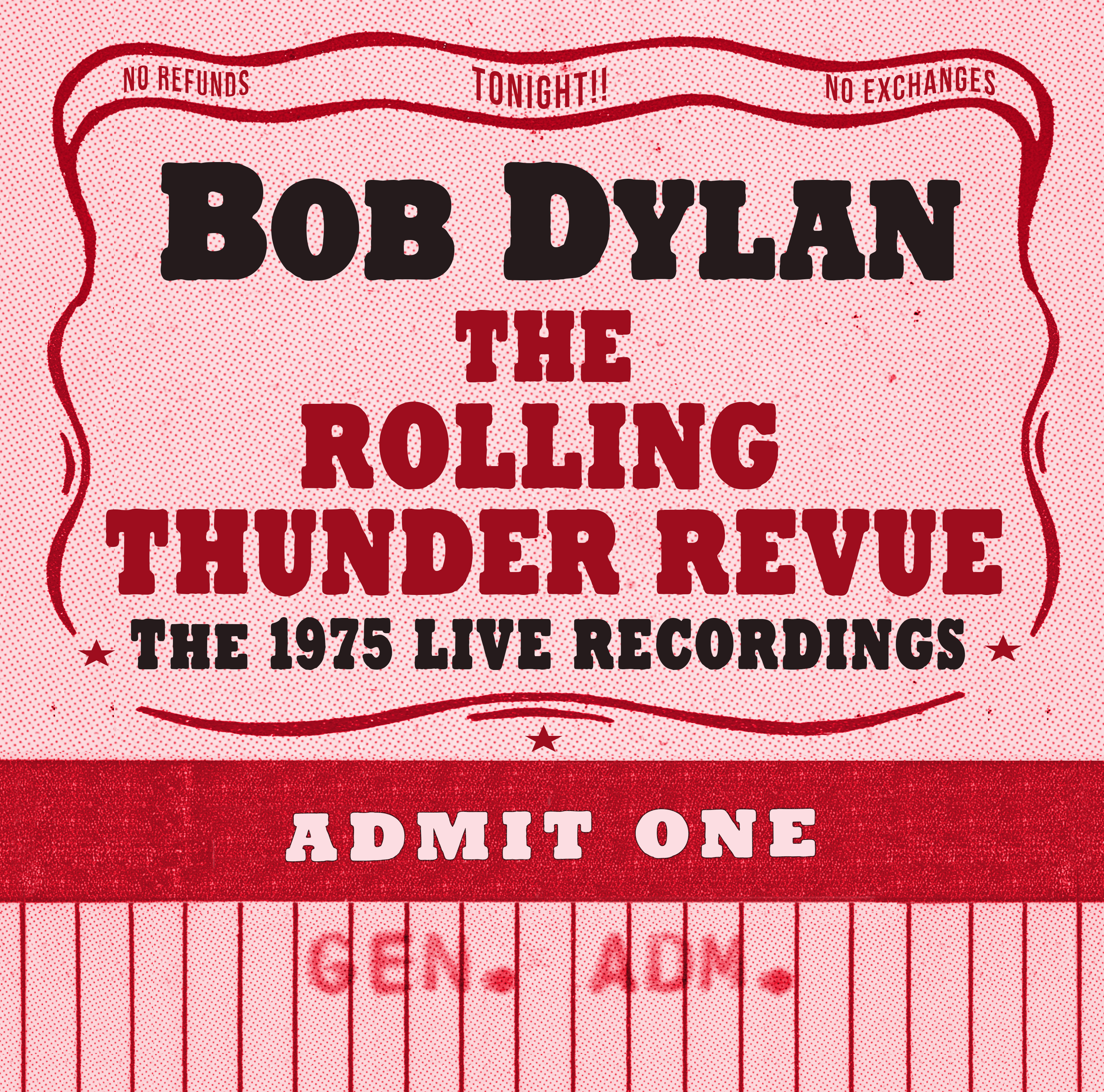 The compilation features 148 tracks in all, with more than 100 of those never previously released. The box set includes a 52-page booklet featuring rare and never-before-seen Rolling Thunder Revue photos and a revelatory essay by novelist/musician Wesley Stace. Concurrent with the issue pf the 14CD box set will be a reissue of The Bootleg Series Volume 5 on vinyl, back in print for the first time since 2002 as a 3LP set with a 64-page booklet.
The compilation features 148 tracks in all, with more than 100 of those never previously released. The box set includes a 52-page booklet featuring rare and never-before-seen Rolling Thunder Revue photos and a revelatory essay by novelist/musician Wesley Stace. Concurrent with the issue pf the 14CD box set will be a reissue of The Bootleg Series Volume 5 on vinyl, back in print for the first time since 2002 as a 3LP set with a 64-page booklet.
Launched in the fall of 1975, Bob Dylan's Rolling Thunder Revue flouted the touring conventions of the time by featuring an eclectic cast of characters and playing small and unusual venues with little advance notice.
The shows would often stretch to more than four hours long, generating some of the artist's most dramatic and dynamic on-stage performances ever. Dylan debuted the new songs he'd written for his forthcoming Desire album (eventually becoming one of his most acclaimed and popular in his canon) with an intensity that Dylan had reached ten years earlier with his incendiary tours with musicians who became The Band. He also took interpretative rides through his back catalog and broke out some unexpected covers.
Dylan gathered amazing friends and collaborators for his ensemble – dubbed Guam for the tour – that included T Bone Burnett, Mick Ronson, Joan Baez, Ramblin’ Jack Elliott, Bobby Neuwirth, Scarlet Rivera, Ronee Blakley, Steven Soles, David Mansfield, Rob Stoner, Howie Wyeth and Luther Rix.
Poet Allen Ginsberg, Joni Mitchell and Roger McGuinn also brought their talents to the show’s encores. Dylan assembled musicians from various backgrounds and sensibilities and mold them into a tight musical unit on stage.
“Since 2002, when The Bootleg Series Vol. 5 made it possible to hear some of the 1975 live recordings I’ve felt that this tour delivered what the 1974 Before the Flood tour with The Band only promised, but deferred — passionate re-engagements with the great catalogue, and powerful new compositions as well,” posed Cal Poly San Luis Obispo English and Literature Professor and poet, Dr. James Cushing, a deejay at KEBF-FM, who once hosted a program Bob Dylan’s Lunch on the radio dial.
“For the Rolling Thunder tour, Dylan had a great recent LP out, Blood on the Tracks, and a fresh one in the can, Desire.
“He sings like a man who knows his new songs are strong. The MVP in the 1975 group is clearly violinist Scarlett Rivera, whose mournful gypsy sound links the older songs with Desire and opens up connections with country swing bands and a few Bessie Smith records.”
Bob Dylan – The Rolling Thunder Revue: The 1975 Live Recordings serves as a companion piece to the new film, Rolling Thunder Revue – A Bob Dylan Story by Martin Scorsese, premiering on Netflix on June 12. Every one of Bob Dylan's performances in the movie can be found in this boxed set.
Bob Dylan – The Rolling Thunder Revue: The 1975 Live Recordings
DISC 1: S.I.R. Rehearsals, New York, NY – October 19, 1975
DISC 2: S.I.R. Rehearsals, New York, NY – October 21, 1975
DISC 3: Seacrest Motel Rehearsals, Falmouth, MA – October 29, 1975
DISC 4-5: Memorial Auditorium, Worcester, MA – November 19, 1975
DISC 6-7: Harvard Square Theater, Cambridge, MA – November 20, 1975
DISC 8-9: Boston Music Hall, Boston, MA – November 21, 1975 (afternoon)
DISC 10-11: Boston Music Hall, Boston, MA – November 21, 1975 (evening)
DISC 12-13: Forum de Montreal, Quebec, Canada – December 4, 1975
DISC 14: Rare Performances
Besides the Bob Dylan songs “Mr. Tambourine Man,” “Ballad of a Thin Man,” “Just Like a Woman,” “It Ain’t Me, Babe,” “Knockin’ on Heaven’s Door,” and “It Takes a Lot to Laugh, It Takes a Train to Cry,” and Dylan’s collaborations with Jacques Levy, "Romance in Durango," "Rita May," "Joey," Isis," "Hurricane," and "Oh, Sister," the package also houses "People Get Ready" by Curtis Mayfield; "This Land Is Your Land" from Woody Guthrie and "The Tracks of My Tears" by the team of William Robinson, Jr., Pete Moore, and William Tarplin.
William Robinson, Jr., Pete Moore, and William Tarplin are listed as composers on the “Tracks of My Tears” tune in the credits, although Tarplin, the legendary Miracles and Smokey Robinson principal guitarist and co-writer of many hit Motown-Tamla recordings, was actually named Marvin Tarplin, not William Tarplin.
I asked multi-instrumentalist and a Bob Dylan keyboardist Al Kooper if he saw the influence of William “Smokey” Robinson on the songwriting of Dylan. I did.
“I’ve cut probably three other Smokey Robinson tunes over my career,” stressed Kooper in a 2010 interview we conducted. “He’s special.
“One of my favorite things,” reminisced Al, “is when I called Dylan one day and said, ‘Hey…What are you doing?’ And he replied, ‘Eating a piece of toast and listening to Smokey Robinson...’ So, that makes a lot of sense.”
The Byrds’ Roger McGuinn is heard on the Rolling Thunder multi-disc set, supplying guitar and vocals on "Knockin' on Heaven's Door" and "This Land Is Your Land."
During 2010 I interviewed Roger and really wanted to know his first impressions of encountering Dylan’s tunes.
“Our early producer Jim Dickson was definitely a large part of the formation of the group and the attitude. It was his pick to do ‘Mr. Tambourine Man.’ He got a demo of it before (Bob) Dylan released it. Jim loved the song. We didn’t get it. He had to bring Bob Dylan around to the World Pacific Studio for us to do the song at all.
“Dylan came over with Bobby Neuwirth and we played ‘Mr. Tambourine Man’ and ‘All I Really Want To Do’ for Dylan and Bobby, and Neuwirth said, ‘Wow. You can dance to it.’ After ‘All I Really Want To Do,’ Dylan said, ‘what was that?’ And we responded, ‘That was one of your songs, man.’ ‘I didn’t recognize it,’ he replied. (laughs).After ‘Mr. Tambourine Man’ we just loved Bob Dylan’s writing. I had a real heart for his lyrics and really sang them from the heart,” confessed Roger.
“I remember one time Dylan took me aside, I went over to the hotel he was staying at and said, ‘You know, I used to think of you as just an imitator but I heard ‘Lay Down Your Weary Tune,’ and listened to that and you’re doing something that wasn’t there before. That’s really good.’
“Dylan’s stuff is brilliant. I coined the term that he was the ‘Shakespeare of our time.’ It was like knowing Shakespeare here. Dylan was carrying on Kerouac and Ginsberg. The baton had been passed. I remember Ginsberg said ‘I think we’re in good hands.’”
Roger McGuinn is no stranger to the Woody Guthrie legacy. He performed “This Land is Your Land” during Rolling Thunder, and in 1967 with the Byrds, waxed “Pretty Boy Floyd” on The Byrds’ Sweetheart of the Rodeo.
“Woody’s stuff is really excellent quality, as is most folk music,” enthused Roger. “We know it stands the test of time. It’s a timeless art form and so is early country music. It’s the same thing. It’s an off-shoot of folk music.
“In the folk scene Woody was very big. I saw that Billy Bragg did the Woody songs with the Wilko band. I admired Woody’s work and it seemed like a good choice because it was countryish, and we did more of a country approach than he did. It fit very well I thought.”
In 1982 I produced a live recording on Allen Ginsberg at The Unitarian Church in Los Angeles and arranged for him to read at some music venues around Southern California over the years, including his 1984 debut McCabe’s Guitar Shop date in Santa Monica.
During 1990 I served as the project coordinator of the recording set The Jack Kerouac Collection and invited Ginsberg, Ray Manzarek, Jerry Gracia and Michael McClure to contribute to the liner note booklet.
In 1996 I interviewed Allen one afternoon in Rhino Records’ conference room in Westwood, California, poet Gregory Corso sat in with us. The following year we did another interview by phone from his New York City apartment.
We discussed Bob Dylan, the Rolling Thunder tour, record producer John Hammond, Sr., and poetry. Ginsberg contributed vocals and finger cymbals on the trek.
An abridged version of our interviews appeared in 1996 in HITS Magazine and a short edited text in The Los Angeles Times on April 7, 1997 when the newspaper asked me to pen one of the obituary/tributes on Allen Ginsberg when he died.
In 2006 I penned the liner notes for the first-ever compact disc of Ginsberg’s Kaddish album, for Water Records, a live reading of the epic poem from Brandeis University that Atlantic Records’ Jerry Wexler released in 1965.
“I visited John Hammond, Sr. in the hospital, on his deathbed, years ago, and our final conversation was about Robert Johnson and Bob Dylan” volunteered Ginsberg in one of our dialogues. “Well, I think I ran into him in the early 60’s. He knew my poetry quite well. But it was around The Rolling Thunder Review with Dylan that we got more intimate.
“I was on The Rolling Thunder tour, doing a little singing, and I had a whole bunch of new material I had done with Dylan in 1971. In 1971 Dylan and I went into a studio and improvised. I had 40 minutes of music with him. So I brought that to Hammond in 1975, after the tour. I had a bunch of new songs and he said, ‘Let’s go in the studio and make an album.’
“I had some musicians who had been with me since 1968 or 1969 since the Blake. David Mansfield from the Rolling Thunder tour and a wonderful musician, Arthur Russell.
“So we got together at CBS Studios and did another 40 minutes of music, and later, John Hammond put the two together. He had left Columbia and started his own label, John Hammond Records, to be distributed by Columbia. So he not only put out what he did with me, he put out a double album, and he got [photographer] Robert Frank, who had done the Rolling Stones’ Exile On Main Street album cover, whose an old friend, to make a composite for our cover, and there was a really good play list inside, and the text was a good deduction.
“However, the record didn’t sell. Before I had a chance to rescue the further 10,000 copies they (Columbia) had, they shredded them, so they were gone, and a rarity now,” he sighed.
“So then in the 1970’s, I began turning on to Dylan. I knew him in the 60’s,” Ginsberg recollected.
“He taught me the three chord blues pattern. So he was my instructor. I began singing in India, Mantra, and in the great 60’s, I began transferring the sacred music idea to Blake, and began transferring that to folk music, and then got together with Dylan in the early 70’s.
I don’t think I would have been singing if it wasn’t for younger Dylan. I mean he turned me on to actually singing. I remember the moment it was. It was a concert with Happy Traum that I went to and saw in Greenwich Village. I suddenly started to write my own lyrics, instead of Blake. Dylan’s words were so beautiful.
“The first time I heard them I wept,” Allen revealed. “I had come back from India, and Charlie Plymell, a poet I liked a lot in Bolinas, at a Welcome Home Party played me Dylan singing ‘Masters Of War’ from Freewheelin’ Bob Dylan, and I actually burst into tears. It was a sense that the torch had been passed to another generation. And somebody had the self-empowerment of saying, ‘I’ll Know My Song Well Before I Start Singing It.’
“Bob Dylan’s film, Renaldo and Clara. Dylan delivers. Well, first of all, it’s Dylan extending himself to the extreme, and including all his friends and all his inspirers, and all his workable companions in a big circus going through America. A musical circus. His mother was along at one point. His kids were along at one point. His wife was along. Joan Baez’s kid was along. So it was this great family outing trying to hit all the small towns, originally, like in Kafka’s America.
The Rolling Thunder tour. The traveling circus in Kafka’s America. For me it was great, and to hear Dylan so often, I was able to hear backstage, in the audience, from the side, in the wings, and go out to the furthest seats with a pass.
“He was at a peak of musicality and energy and inspiration. Like ‘One More Cup of Coffee’ and ‘Idiot Wind,’ which is one of my favorite lyrics with a national lyric. Its great ‘Circles around your skull.’ Really quite manic. It was great to see a band on a rock n roll tour. Rolling Thunder Review on a grand tour, and see all the work that went into it.”
(Harvey Kubernik is an author of 15 books. His literary and music anthology Inside Cave Hollywood: The Harvey Kubernik Music InnerViews and InterViews Collection Vol. 1, was published in December 2017, by Cave Hollywood.
Kubernik’s The Doors Summer’s Gone was published by Other World Cottage Industries in February 2018 and been nominated for the 2019 Association for Recorded Sound Collections Awards for Excellence in Historical Recorded Sound Research.
During December 2018, Sterling/Barnes and Noble published Kubernik’s The Story of The Band From Big Pink to the Last Waltz. This century Harvey penned the liner note booklets to the CD packages of Carole King’s Tapestry, Elvis Presley The ’68 Comeback Special, The Ramones’ End of the Century and Allen Ginsberg’s Kaddish.
Kubernik’s writings have been printed in several book anthologies, including The Rolling Stone Book of the Beats and Drinking with Bukowski. He is the project coordinator of the recording set The Jack Kerouac Collection.
In November 2006, Harvey Kubernik was a featured speaker discussing audiotape preservation and archiving at special hearings called by The Library of Congress and held in Hollywood, California.

